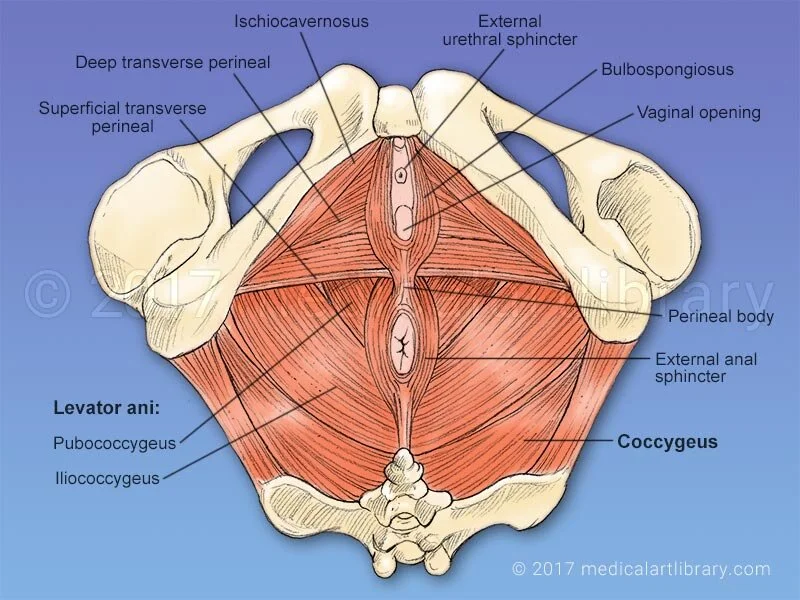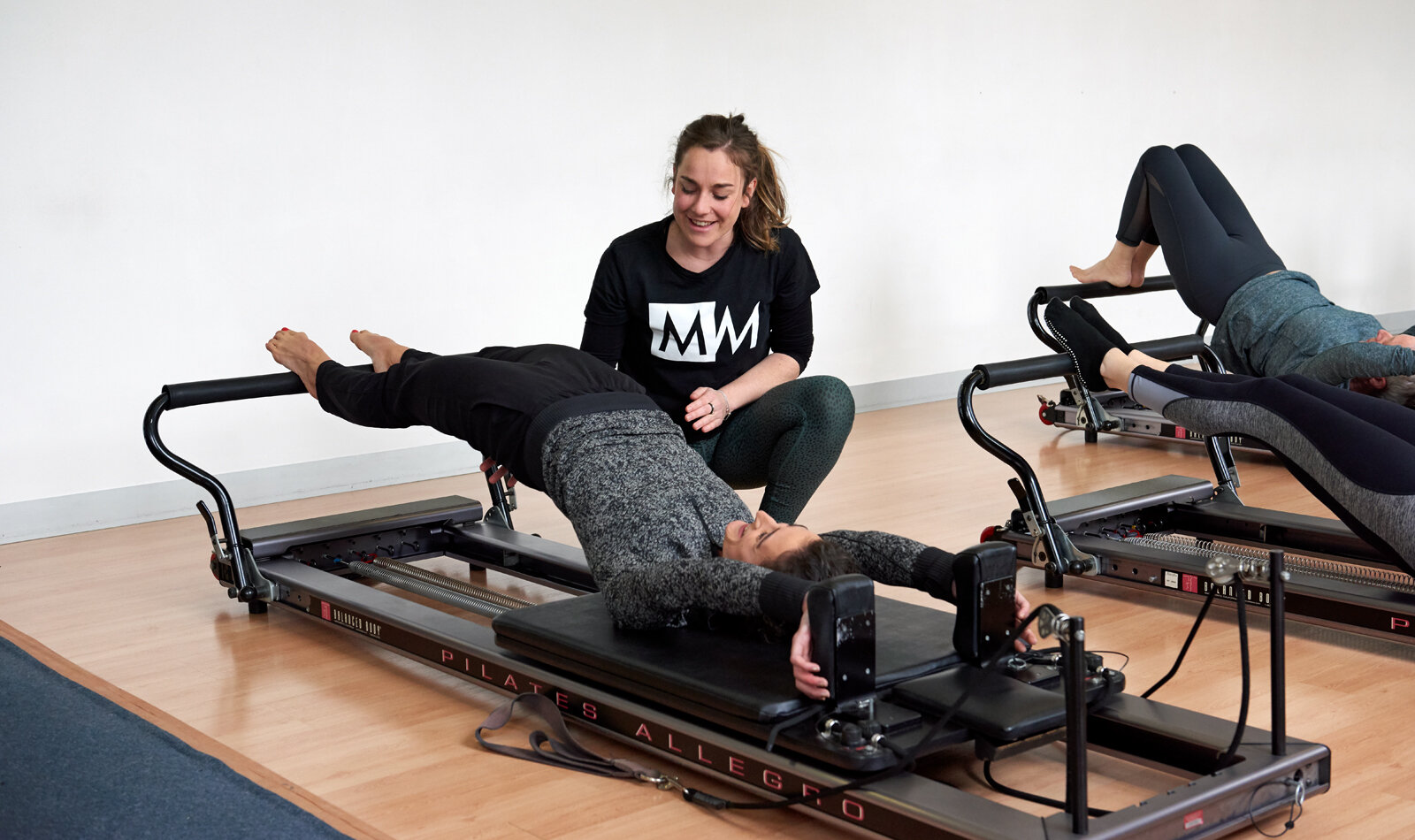Pilates and your Pelvic Floor Muscles
The how, why, and when of using the famous Pelvic Floor Muscles with Pilates
Having been in the health and fitness industry for over 10 years now, one of the most commons questions I get from a client is either A) what are my pelvic floor muscles, and B) am I meant to be using my pelvic floor muscles now?! And this stems from the fact that about 20 years or so ago, when Pilates was still in its infancy in Melbourne, it became synonymous with physiotherapy in particular, as a support tool for rehabilitating injuries - mainly those of the spine. So it got drilled into not only the practitioners, but anyone who did Pilates that they had to squeeze their pelvic floor to do Pilates! In reality, this is far from the case, and has actually become quite problematic for a lot of people, creating dysfunctional pelvic floor muscles, as well as stiff and tight backs.
What are the pelvic floor muscles?
The pelvic floor muscles are a group of small muscles that sit in the bottom of the pelvis, and have a direct impact on the control of our bowels and bladder, and for ladies, also the vagina and associated organs. They can be used in combination with the rest of our abdominal cavity to control the flow of excrement and urine out of the body, push a baby out, or in the case of Pilates, create stability of the joints in the pelvis and lower spine. You can see in the image to the right the bones at the front form the front of the pelvis, while the large flat bone the back is your sacrum, or base of the spine. Not shown in the image is how the bones from the front wrap right around to end up sitting either side of the sacrum, forming your Sacro-iliac joints (SIJ) of which many of you will have heard the name before.
How do they tie in to Pilates?
Since the beginning of Joseph Pilates work, he’d talk about sucking in the stomach, or cue ‘belly button to spine.’ What he was likely unaware of, was that this also connected to using the pelvic floor muscles in a way that it forces the SIJ to close and stabilise, which then relaxes the musculature of the torso enough to have greater flexibility in the spine. So then a few years back now, various people completed research on the effectiveness of this technique and similar approaches, and it was shown that when actively recruiting the PFM and it’s partner muscles (Transverse Abdominis, and multifidus) in a certain way, there was a scientifically significant reduction of pain or instability for participants in the various study groups. With this research in hand, many a physiotherapist and Pilates practitioner alike started using the cue of the PFM and transverse abdominus working together to stabilise the spine, for all things Pilates related, which helped build a strong feedback that Pilates was excellent for fixing spines. If you’d like to learn more about the research, follow this link to the APPI website, a clinical Pilates education provider and their research manual of articles they use when teaching courses.
So what’s the problem with using them all the time?
As with all muscles in our body, they are never really off - everything is always contracting and relaxing within a certain bandwidth of strength, and this is what gives our body the integrity required to keep upright against gravity. And the best part is, at least 95% of this occurs subconsciously at any given time, through the many reflexes and patterns built into our body through our developmental years. It does get a bit trickier when we experience injury or pain, as the body will then change patterns to avoid using certain areas to minimise pain and allow inflammation to go in and heal the tissues. And this is a completely normal thing, and generally we then recover and adapt back to similar patterns as previous. However, if the issue isn’t resolved, or the original pattern becomes obsolete, we then have to consciously think about what’s going on in order to consciously minimise pain and stabilise certain areas - and this is what we see a lot of in Pilates. Using the cues of the PFM and TrA to create stability of the pelvis and spine when moving can be a fantastic starting point when beginning rehabilitation an injury to those areas, such as disc issues, pelvis pain, and incontinence issues. But often, and particularly in the fitness industry, people without injury are told to use their PFM and TrA and often to hold them on for extended periods, even though there may be no injury or need to stabilise the pelvis. And this can create a few different problems like constipation, pain and increased frequency of urination, pain with sex (Dyspareunia), prolapse, and musclar tightness of the lower back and pelvis (1). And this is due to the conscious contraction overriding the subconscious patterns, wrecking havoc upon what was a finely tune orchestra of muscular contraction and throwing it all into disarray - think of an orchestra playing, and then someone let’s the saxophone break out on their own solo completely different to what’s being played - it wouldn’t go down well for the performance!
So when am I meant to use the PFM?
I’ll try to keep this as simple as I can. The times I’d encourage you to actively recruit your PFM is if you experience unpredictable pain in your lower back and pelvis, and recruiting helps ease some pain; if you’ve had an injury to the spine and are working through a rehabilitation program; if you’re recovering from giving birth and are having issues with continence; and that’s generally it. There may be times when using the PFM/TrA does benefit a movement by giving you more stability to increase flexibility, but this isn’t always the case for everyone. And even when using it, only recruit it for the moments when you actually need it, like moving from lying to sitting or standing - and then PLEASE RELAX the area again. It is not meant to have sustained contractions above what it can subconsciously organise. Think of it like a trampoline - it has a base level of tension, and then it can be contracted and stretched, but then when you're done with it, it should rest back to normal. Not relaxing your pelvic floor would be like a trampoline that is stuck in an upwards position, which will definitely impact how you can use it. Don’t get me wrong - the odd contraction isn’t going to do you any harm, but continual and sustain contractions are if you don’t need them. And even if you do, the goal is to get strong enough in your body that you can gradually stop the contractions and let your subconscious patterns take over again.
Remember - one of the best things about our body is that it will always adapt to the situation faster than you can consciously figure out - so if you just try a few movements, generally you’ll find your body autocorrecting for you to do it, without the active use of your PFM/TrA. So focus on the movement at hand, rather than having to think about which body parts have to be contracted at any given moment in time - it’ll make things much less confusing and also make it much more enjoyable!
Want to learn move about Pilates at Movementality? Contact us with your questions.
References
(1) https://www.vuvatech.com/blogs/care/what-are-the-symptoms-of-tight-pelvic-floor-muscles



